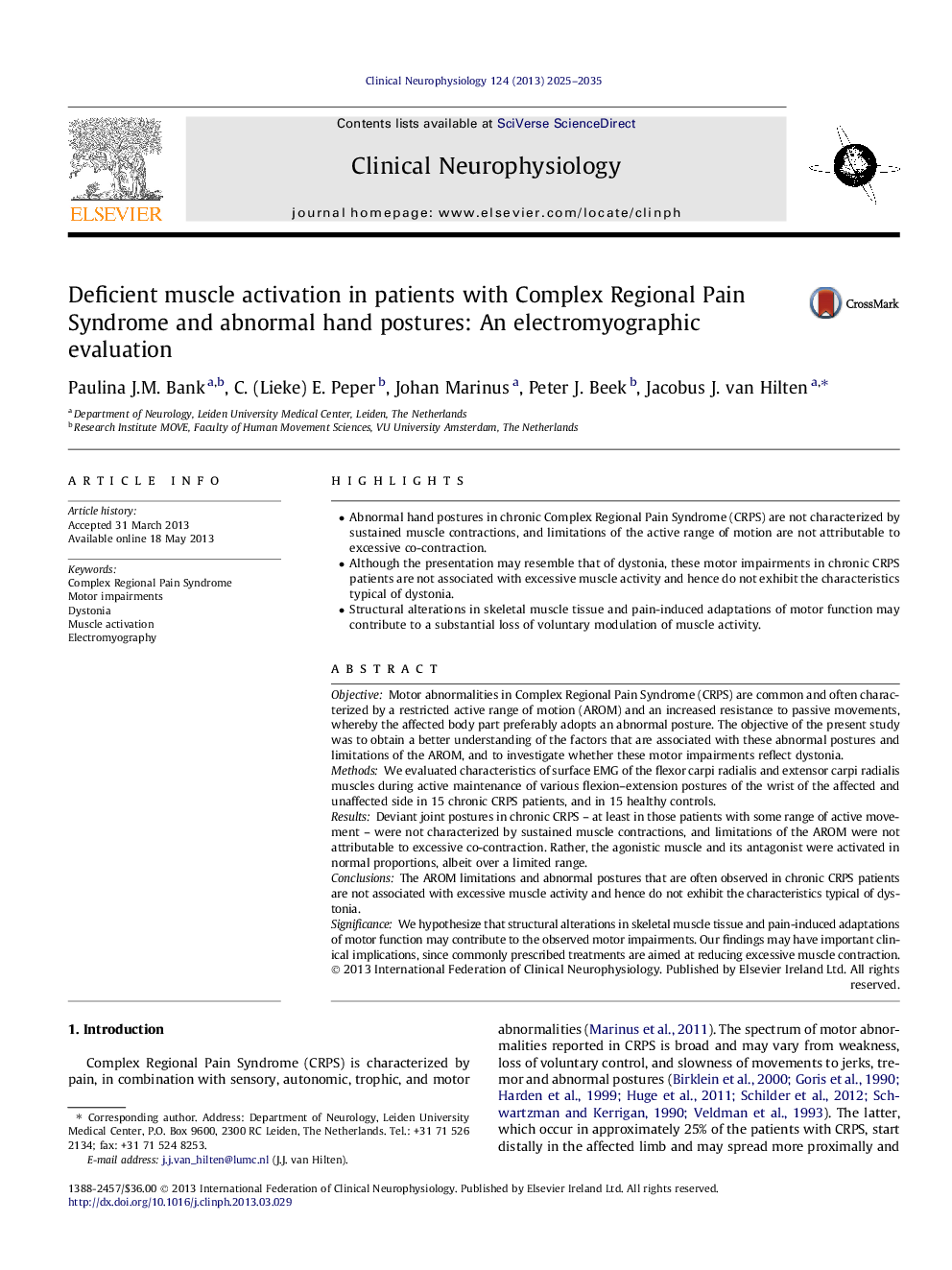| Article ID | Journal | Published Year | Pages | File Type |
|---|---|---|---|---|
| 3044681 | Clinical Neurophysiology | 2013 | 11 Pages |
•Abnormal hand postures in chronic Complex Regional Pain Syndrome (CRPS) are not characterized by sustained muscle contractions, and limitations of the active range of motion are not attributable to excessive co-contraction.•Although the presentation may resemble that of dystonia, these motor impairments in chronic CRPS patients are not associated with excessive muscle activity and hence do not exhibit the characteristics typical of dystonia.•Structural alterations in skeletal muscle tissue and pain-induced adaptations of motor function may contribute to a substantial loss of voluntary modulation of muscle activity.
ObjectiveMotor abnormalities in Complex Regional Pain Syndrome (CRPS) are common and often characterized by a restricted active range of motion (AROM) and an increased resistance to passive movements, whereby the affected body part preferably adopts an abnormal posture. The objective of the present study was to obtain a better understanding of the factors that are associated with these abnormal postures and limitations of the AROM, and to investigate whether these motor impairments reflect dystonia.MethodsWe evaluated characteristics of surface EMG of the flexor carpi radialis and extensor carpi radialis muscles during active maintenance of various flexion–extension postures of the wrist of the affected and unaffected side in 15 chronic CRPS patients, and in 15 healthy controls.ResultsDeviant joint postures in chronic CRPS – at least in those patients with some range of active movement – were not characterized by sustained muscle contractions, and limitations of the AROM were not attributable to excessive co-contraction. Rather, the agonistic muscle and its antagonist were activated in normal proportions, albeit over a limited range.ConclusionsThe AROM limitations and abnormal postures that are often observed in chronic CRPS patients are not associated with excessive muscle activity and hence do not exhibit the characteristics typical of dystonia.SignificanceWe hypothesize that structural alterations in skeletal muscle tissue and pain-induced adaptations of motor function may contribute to the observed motor impairments. Our findings may have important clinical implications, since commonly prescribed treatments are aimed at reducing excessive muscle contraction.
